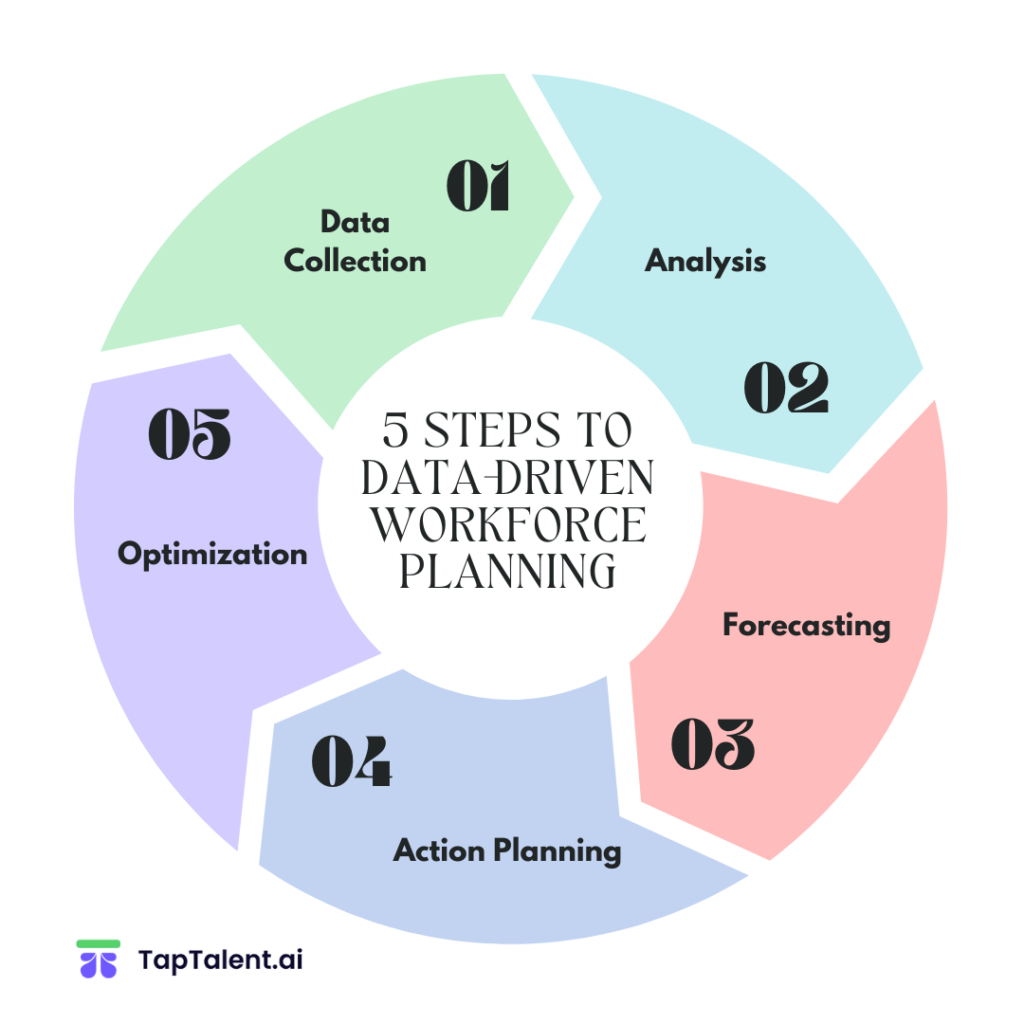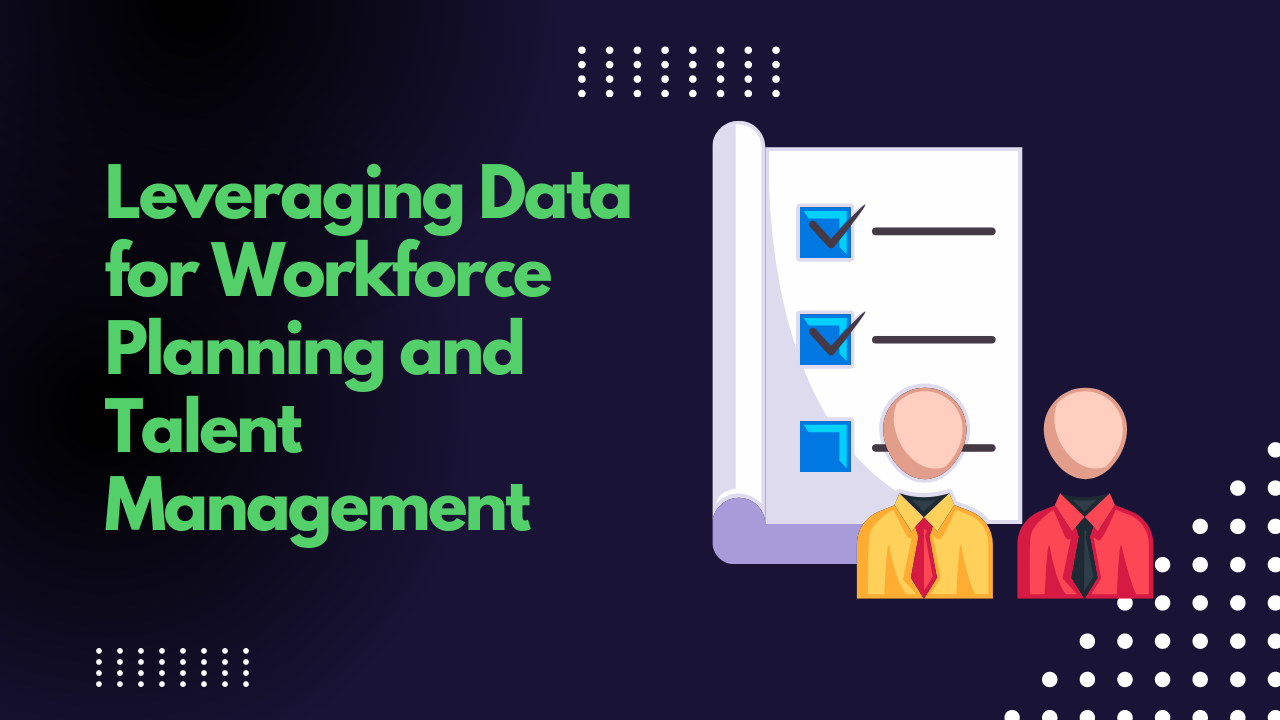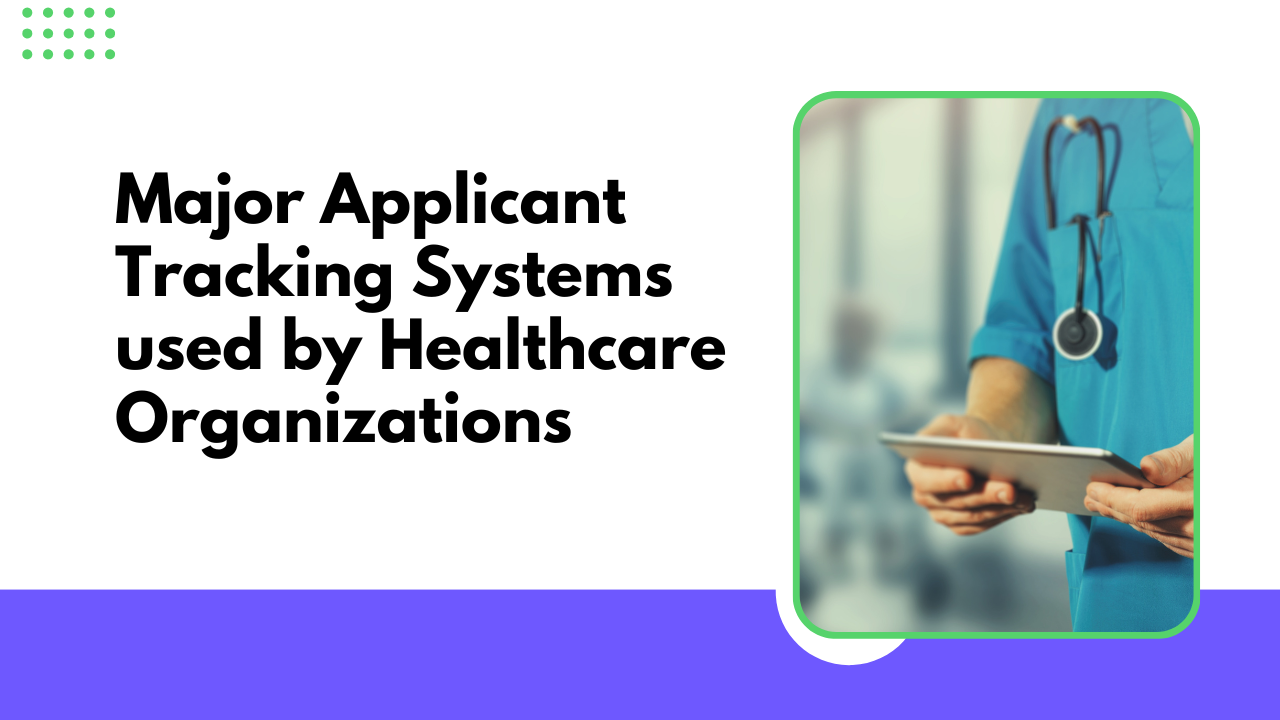The businesses of today are under constant pressure to innovate and adapt faster than ever before. To stay ahead, organizations need a key ingredient for success: a future-proof workforce strategy. A strategic approach to workforce planning and talent management is no longer a luxury but a necessity. By aligning people strategy with business objectives, organizations can unlock their full potential and gain a significant competitive advantage.
The Power of Data in Workforce Planning

In today’s rapidly evolving business landscape, organizations constantly face challenges; consequently, they must adapt to new technologies, shifting market demands, and evolving customer expectations. A key factor in successfully navigating these complexities and ensuring long-term success lies in effective workforce planning.
Furthermore, workforce planning is a strategic process that goes beyond simply filling open positions. Specifically, it involves a comprehensive analysis of an organization’s current workforce, identifying future talent needs, and developing actionable plans to bridge the gap between the two. Therefore, this proactive approach to talent management is crucial for several reasons:
- Staying Ahead of the Curve: By anticipating future skills requirements, organizations can proactively attract and retain the right talent, ensuring they are well-equipped to meet evolving business demands.
- Optimizing Talent Resources: Effective workforce planning ensures that the right people with the right skills are in the right roles at the right time, maximizing productivity, efficiency, and employee satisfaction.
- Gaining a Competitive Edge: In today’s competitive landscape, a skilled, adaptable, and engaged workforce is a significant differentiator. Organizations that prioritize workforce planning are better positioned to attract top talent and outperform their competitors.
However, traditional workforce planning methods, often reliant on intuition and historical data, are no longer sufficient in today’s data-rich environment. Therefore, organizations need to embrace data-driven decision-making to navigate the complexities of the modern workforce.
Data provides valuable insights that can significantly enhance workforce planning efforts, such as:
- Identifying Skill Gaps: Analyzing employee data, industry trends, and emerging technologies can reveal current and future skill gaps within an organization, allowing for proactive training and development initiatives or targeted recruitment strategies.
- Forecasting Future Needs: By leveraging historical data, market trends, and business projections, organizations can therefore develop more accurate forecasts of future talent demands. Consequently, this enables them to make informed decisions regarding hiring, training, and resource allocation.
- Optimizing Talent Allocation: Data-driven insights can help identify the best fit for employees based on their skills, experience, and career aspirations. Consequently, this leads to higher employee engagement, improved productivity, and reduced turnover.
Consider these real-world examples of how data-driven workforce planning leads to better outcomes:
- Retail Success Story: A large retail company used historical sales data and predictive analytics to anticipate peak shopping seasons. This data-driven approach allowed them to adjust their hiring timelines strategically, ensuring they had sufficient staff to manage increased customer demand. As a result, they improved customer satisfaction and maximized sales.
- Tech Industry Advantage: A software development firm analyzed employee performance data and upcoming project requirements in order to identify potential skill gaps in emerging technologies. With this insight, they subsequently implemented targeted training programs to upskill their existing workforce, thereby reducing their reliance on external hires and ultimately saving costs.
TapTalent is undeniably leading the way in this data-driven revolution in talent acquisition. Moreover, by not only providing access to a vast talent pool but also utilizing AI to analyze candidate profiles, TapTalent enables organizations to make more informed workforce planning decisions. Consequently, they can optimize their recruitment processes and, ultimately, build high-performing teams that drive success in today’s dynamic business world.
Building a Data-Driven Workforce Planning Process

The idea of using data to guide talent decisions may seem promising; nevertheless, the actual implementation can appear overwhelming. However, fear not! Indeed, establishing a robust, data-driven workforce planning process is entirely achievable if you follow a structured approach. Here’s how:
Detailed Implementation Guide
- Data Collection: Tapping into the Right Sources
- Objective: Gather and consolidate data from various sources to gain a comprehensive understanding of your workforce and how it aligns with business objectives.
- Implementation:
- HR Systems (Your Data Goldmine): HR systems contain a wealth of valuable information. Extract data on:
- Employee Demographics: Age, tenure, location, department, etc.
- Performance History: Reviews, promotions, and training records.
- Compensation and Benefits: Salary data, bonus payouts, and benefits enrollment.
- Performance Reviews (Beyond the Numbers): Go beyond just looking at scores; dive into qualitative feedback to understand employee strengths, areas for development, and career aspirations.
- Talent Acquisition Data (Tracking Your Pipeline): Analyze your recruitment process to understand:
- Time-to-Hire: How long does it take to fill open positions?
- Source of Hire: Which channels bring in the best talent?
- Attrition Rates: Are there trends in why employees leave?
- Market Trends & Industry Benchmarks (Staying Ahead of the Curve): Leverage external data to understand:
- Emerging Skills: What skills are in high demand in your industry?
- Salary Trends: Are you offering competitive compensation packages?
- Competitor Analysis: What are your competitors doing in terms of talent acquisition and development?
- HR Systems (Your Data Goldmine): HR systems contain a wealth of valuable information. Extract data on:
- Personalized Tips:
- Data Integrity is Key: Ensure that the data you collect is accurate and consistent. Inaccurate data leads to flawed insights.
- Data Privacy Matters: Be mindful of data privacy regulations (such as GDPR) and ensure you have obtained the necessary consents for data collection and processing.
- Expected Impact on KPIs:
- Improved data accuracy for better decision-making.
- A more comprehensive understanding of workforce dynamics.
- Data Analysis: Uncovering Actionable Insights
Objective: Convert raw data into meaningful insights that can shape your workforce planning strategies.
Implementation:
Choose the Right Tools: First, consider the numerous HR analytics and data visualization tools available. Thus, select those that align with your technical expertise and budget.- For Beginners: Specifically, opt for user-friendly tools that offer pre-built reports and dashboards.
- For Data Experts: In contrast, explore advanced analytics platforms that allow for custom analysis and predictive modeling.
- Identify Patterns & Trends: Next, look for correlations within your data. For example:
- Are high-performing employees concentrated in certain departments?
- Is there a link between specific training programs and improved performance?
- Are certain demographics more likely to leave the company?
- Skill Gap Analysis: Furthermore, compare current workforce skills with those required for future business success. Use job market data and industry reports to predict future skill demands. Additionally, conduct internal skills assessments to gauge current workforce capabilities.
Personalized Tips:- Start Simple: Initially, don’t overcomplicate things. Instead, start with basic analysis and gradually build your capabilities.
- Focus on Business Outcomes: Always tie your data analysis to specific business objectives. Consider what insights will help you make better decisions.
- Expected Impact on KPIs:
- More effective talent acquisition strategies.
- Targeted learning and development programs.
- Improved employee retention rates.
- Forecasting: Predicting Your Future Talent Needs
- Objective: Predict future talent needs based on business growth projections, market trends, and internal workforce dynamics.
- Implementation:
- Align with Business Goals: Collaborate closely with business leaders to understand future growth plans, expansion strategies, and changes in the competitive landscape.
- Factor in Attrition: Use historical attrition rates and predictive modeling to estimate future employee turnover.
- Scenario Planning: Create multiple workforce scenarios to evaluate the impact of different variables (e.g., rapid growth vs. economic downturn).
- Use Predictive Analytics (For Advanced Users): Utilize statistical models and machine learning algorithms to forecast talent demand more accurately.
- Personalized Tips:
- Start with a Baseline: Begin by forecasting based on historical data and adjust projections as you gather more insights.
- Don’t Be Afraid to Iterate: Workforce planning is an ongoing process, so continuously review and refine your forecasts.
- Expected Impact on KPIs:
- Proactive talent acquisition to avoid skill shortages.
- Optimized resource allocation for business growth.
- Improved succession planning and leadership pipeline development.
- Action Planning: Turning Insights into Strategies
- Objective: Develop concrete action plans based on data analysis and forecasting to meet future talent needs and business objectives.
- Implementation:
- Develop Targeted Recruitment Strategies: Determine the most effective channels for reaching ideal candidates based on source-of-hire data.
- Implement Upskilling and Reskilling Programs: Address skill gaps by investing in training and development initiatives aligned with future needs.
- Optimize Internal Talent Mobility: Create opportunities for internal promotions, transfers, and project assignments to boost employee engagement and retention.
- Succession Planning: Identify high-potential employees and offer targeted development opportunities to prepare them for future leadership roles.
- Personalized Tips:
- Set Realistic Goals: Don’t try to tackle everything at once. Prioritize action items that will have the most significant impact.
- Track Your Progress: Regularly monitor the effectiveness of workforce planning initiatives and make adjustments as needed.
- Expected Impact on KPIs:
- Reduced time-to-hire for critical roles.
- Improved employee engagement and satisfaction.
- Enhanced business agility and responsiveness to change.
- Stronger leadership pipeline.
Integrating TapTalent:
Throughout this process, TapTalent’s AI-powered platform serves as a valuable ally. Whether you are sourcing and assessing candidates or managing the entire recruitment workflow, TapTalent streamlines your talent acquisition efforts. Additionally, it provides data-driven insights that ultimately guide your workforce planning decisions.
Integrating Data into Talent Management Practices: A Data-Driven Approach to Optimizing the Employee Lifecycle
In today’s data-rich environment, businesses have an unprecedented opportunity to leverage data to optimize their talent management practices. By integrating data into every stage of the employee lifecycle, organizations can make more informed decisions, improve efficiency, and gain a competitive advantage.
This section will explore how data can be seamlessly woven into four key talent management practices:
1. Recruitment & Selection: Finding the Perfect Fit
Data empowers businesses to move beyond gut feeling and build a highly targeted recruitment process:
- Identify Optimal Sourcing Channels: Firstly, don’t waste resources on channels that yield minimal returns. Instead, analyze data from past recruitment campaigns to determine which sources consistently deliver high-quality candidates. For example, by analyzing historical hiring data, you can clearly identify which platforms attract top performers. If LinkedIn consistently delivers candidates with longer tenure, then focus your recruitment efforts on this platform.
- Optimize Job Postings: First, craft compelling job postings that resonate with your target audience. Next, use data on application rates and click-through rates to A/B test different versions of job titles, descriptions, and required skills. For instance, you can experiment with various keywords in your job titles and descriptions. Then, track which variations lead to more applications from qualified candidates, and refine your approach accordingly.
- Enhance Candidate Assessment: Implement data-driven assessment methods to objectively evaluate candidates. Leverage pre-employment assessments, skills tests, and resume screening tools to identify the best-fit individuals. This allows you to objectively evaluate candidates based on demonstrable abilities, ensuring that those who progress align with the role’s technical requirements.”
- TapTalent Integration: TapTalent’s AI-powered platform excels in this area by offering access to a global talent pool of 800 million+ professionals, streamlining candidate sourcing through its LinkedIn extension, and providing AI-driven testing and assessment tools to identify top talent efficiently.
Expected Impact: Increased candidate quality, reduced time-to-hire, and lower cost-per-hire.
2. Performance Management: Driving Continuous Improvement
Data-driven performance management fosters a culture of transparency, accountability, and growth:
- Set Data-Driven Goals: Move away from vague objectives. Use historical performance data, industry benchmarks, and business objectives to set clear, measurable, and attainable goals for employees. Align individual goals with team and organizational objectives for maximum impact.
- Track Progress Continuously: Implement systems to monitor key performance indicators (KPIs) related to individual and team goals. Real-time dashboards and visualizations provide valuable insights into progress and areas for improvement.
- Provide Data-Informed Feedback: Base performance reviews and feedback on objective data points. Use data to highlight areas for improvement and provide specific, actionable recommendations. This approach replaces subjectivity with concrete evidence, fostering a more constructive and productive feedback process.
Expected Impact: Improved employee performance, increased employee engagement, and enhanced productivity.
3. Learning & Development: Cultivating a Culture of Growth
Data-driven learning and development programs ensure that employees acquire the skills they need to thrive:
- Identify Skill Gaps: Analyze data from performance reviews, 360-degree feedback, and skills assessments to pinpoint individual and organizational skill gaps. This data-driven approach ensures that training programs are highly targeted and address critical needs.
- Personalize Learning Paths: To begin with, leverage learning management systems (LMS) and data on employee skills and career aspirations to create personalized learning paths. By recommending relevant courses and development opportunities, organizations can effectively maximize engagement and enhance knowledge retention.
- Measure Training Effectiveness: Don’t just deliver training; measure its impact. Track completion rates, assess knowledge retention, and, most importantly, analyze pre-and post-training performance data to determine the effectiveness of programs. Expected Impact: Enhanced employee skills, increased employee retention, and improved business performance.
4. Succession Planning: Ensuring a Strong Future
Data-driven succession planning helps organizations build a pipeline of future leaders:
- Identify High-Potential Employees: Analyze performance data, skills assessments, and leadership potential indicators to identify individuals who consistently excel and demonstrate leadership qualities. “Look beyond just performance reviews. Identify employees who consistently seek out new challenges, demonstrate strong problem-solving skills, and show a willingness to take on leadership roles.”
- Create Targeted Development Plans:First, develop personalized development plans for high-potential employees to effectively address their specific skill gaps and prepare them for leadership roles. Furthermore, by providing targeted training, mentorship, and challenging assignments, organizations can successfully nurture their future leaders.
For instance, if you identify an employee with high potential but lacking experience in leading projects, then assign them projects that allow them to develop those skills under the mentorship of a senior leader. - Track and Measure Success: Continuously monitor the progress of high-potential employees; moreover, provide ongoing feedback and mentorship while adapting development plans as needed. This iterative approach not only ensures that individuals stay on track but also guarantees they receive the support necessary to succeed.
Consequently, regularly review the development plans of high-potential employees, provide guidance and support, and make adjustments based on their progress and evolving career aspirations.
Expected Impact: Improved leadership pipeline, reduced time-to-fill for critical roles, and improved organizational stability.
Data: The Key to Unlocking Talent Potential
By embracing a data-driven approach to talent management, organizations can effectively optimize every stage of the employee lifecycle. Specifically, from attracting top talent to developing future leaders, data empowers businesses to make more informed decisions. Consequently, this leads to improved efficiency and the creation of a high-performing workforce that drives sustainable success.
Tools and Technologies for Data-Driven Workforce Planning
The good news is that a wealth of tools and technologies are available to help organizations harness the power of data for effective workforce planning. HR analytics platforms provide a centralized hub for collecting, analyzing, and visualizing workforce data.
These platforms offer insights into key metrics such as employee turnover, time-to-hire, and performance trends, enabling data-driven decision-making. Talent marketplaces, like LinkedIn or specialized industry platforms, offer access to a vast pool of potential candidates. These platforms allow businesses to actively search for talent based on specific skills, experience levels, and location preferences.
Skills assessment tools play a crucial role in evaluating candidates’ technical and soft skills. These tools utilize various methods, including online tests, coding challenges, and simulations, to provide objective insights into a candidate’s abilities and suitability for a particular role. While these individual tools offer significant value, imagine the power of a platform that seamlessly integrates these functionalities into a unified solution.
TapTalent as an AI-powered talent acquisition platform, offers a comprehensive suite of features designed to streamline every stage of the workforce planning and talent management process. TapTalent’s dashboard provides real-time insights into your talent pipeline, recruitment funnel, and overall workforce demographics, empowering you to make data-backed decisions.
With access to a vast talent pool of over 800 million professionals, TapTalent empowers businesses to source and connect with talent across industries and geographies.
Overcoming Challenges and Ensuring Data Privacy
While data empowers organizations to make informed workforce decisions, responsible data handling is paramount. This section delves into the critical considerations of data security and employee privacy within the realm of data-driven workforce planning.
Data Security is Non-Negotiable
Safeguarding sensitive HR data is non-negotiable. Implementing robust security measures, including data encryption, strict access controls, and regular security audits, is crucial to prevent unauthorized access and potential breaches. Seeking industry-standard security certifications like SOC 2 or ISO 27001 further demonstrates a commitment to data protection.
Respecting Employee Privacy
Respecting employee privacy is fundamental. Building trust with your employees is essential, and that starts with responsible and transparent data handling practices. This includes:
- Data Anonymization and Aggregation: Deriving valuable insights from data without tying it to individual identities.
- Consent Management: Obtaining clear and explicit consent from employees before collecting, using, or sharing their data.
- Transparent Data Usage Policies: Providing clear and accessible data usage policies that outline what data is collected, how it’s used, and for what purposes.
- Right to Access and Rectification: Empowering employees with the right to access, correct, or delete their personal data.
Compliance and Ethical Data Practices
Compliance with data privacy regulations like GDPR and CCPA is non-negotiable. Adhering to these regulations is not merely a legal obligation but reflects a commitment to ethical data practices and fosters trust with employees.
Finding the Right Balance
Data-driven workforce planning offers tremendous potential, but it must be approached responsibly. By prioritizing data security, employee privacy, and regulatory compliance, organizations can unlock the full benefits of data while building a culture of trust and transparency.
In conclusion, embracing data empowers organizations to make more informed talent decisions, optimize workforce allocation, and enhance overall business performance. In today’s competitive landscape, characterized by rapid technological advancements and evolving workforce dynamics, leveraging data is no longer optional—it’s essential.
Organizations that prioritize data-driven workforce planning and talent management position themselves for greater agility, resilience, and success in the years to come. Ready to harness the power of data for your workforce? TapTalent provides the tools and insights you need. Schedule a demo with TapTalent today and discover how we can help you build a future-ready workforce.
Content
- Building a Data-Driven Workforce Planning Process
- Integrating Data into Talent Management Practices: A Data-Driven Approach to Optimizing the Employee Lifecycle
- Tools and Technologies for Data-Driven Workforce Planning
- Overcoming Challenges and Ensuring Data Privacy
- Compliance and Ethical Data Practices



